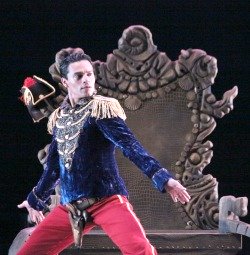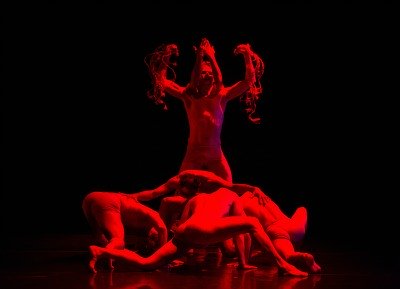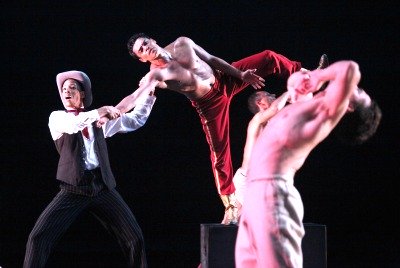| Back to Back Issues Page | |||
 |
|||
|
The Limon Dance Company, The Dance Thinker, Issue #22 September 11, 2012 |
|||
The Dance Thinker Issue # 22, SEPTEMBER 11, 2012
https://www.contemporary-dance.org/The_Dance_Thinker-limon-dance-company.html
We have: - A page for contemporary dance announcements in which you can post your news about workshops, auditions, performances, meetings or any current, related items. - A contemporary dance blog where you can find current information and that will automatically distribute what you post in the announcements page to facebook, twitter and all subscribers to the site’s RSS feed. - A worldwide contemporary dance directory of schools, companies, scholarships and related websites to which you can also submit your contact information. - A special page for asking dance questions. - Several pages in which you can participate with contributions like articles, reviews, questions, comments or even ratings. - An archive for THE DANCE THINKER back issues, where you can always revisit precedent issues from our e-zine. - A contact page through which you can address to me directly if you have questions, ideas, wishes, suggestions or comments.
News
"BLU"!!!!!!!! Congratulations BLU! I hope you enjoy reading The handy e-book of CONTEMPORARY DANCE HISTORY. If the rest of you are curious, find the poem at our dance poetry page (just scroll down and you will see). The contest is over now but you can always continue sharing dance poetry and great statements through our submission form in that section: Form for sharing poetry (just remember that it needs to be original). If you still wish to win a free copy of The handy e-book of CONTEMPORARY DANCE HISTORY, be attentive. There’s a new contest coming in the next issue of The Dance Thinker… ;--) !
Daniel holds a BFA (2006) from the Folkwang-Hochschule in Germany. During his stay there, he had the great opportunity of dancing for Pina Bausch in “The Rite of Spring” and “Tannhäuser”. He was a dancer for “La Fura dels Baus” and Kuo Chu Wu as well. Since 2006, Daniel dances with the Limón Dance Company and works in different dance activities, being an independent choreographer, promoting dance or directing his own company “PajarilloPintao”, with seat in Germany and New York. Thanks to the work of “Andanza”*, Daniel visited Medellín and gave a workshop on the topic of the Limón Technique and his repertoire. This was the first time of such a workshop in the city, long after the last local visit of the Limón Dance Company, in 2005. Knowing that the Limón Dance Company is such a stable and worldwide renowned dance company, I was very curious to ask about the experience of dancing there. As every dancer that has collaborated with contemporary-dance.org, Daniel was completely generous and kindly shared a part of his dancing experience with me (us …). So, below I’m sharing our chat with you: the testimony of one of the dancers of the Limón Dance Company, in which he tells about that experience and its life-working style. Enjoy!:
Contemporary-dance.org: How did you ended up dancing for this company? Daniel Fetecua: I was studying at the Folkwang Hochschule in Germany and my modern dance teacher was Libby Nye, who had danced with José Limon. She was passionate about the Limón technique and her experience while working with him. During my third year of studies with her, Alice Condodina came to the school and made a reconstruction of one of Limón’s pieces. She taught me the Duet of “Choreographic Offering”, which is a piece José Limón created for his mentor Doris Humphrey, and “The Winged”. At the end of that workshop, Alice suggested me to visit them in New York for the summer course. I wanted to go, for sure, and we managed to get a scholarship and financial aid for my trip. It wasn’t easy though, because my American visa was denied. But finally, I got the visa two days before the scheduled time, thanks to the intervention of the school director. So I went to New York and attended a three weeks workshop. Strangely one week before the trip, I hurt my knees so I had to sit and watch for the first two weeks. However, I managed to incorporate the teachings and during the third week, when I was feeling better, I showed some of my work. It went really well and I guess it caused an impression on Carla Maxwell, the current director of the company, because I’ve heard her saying that even though I was sitting all the time, I had danced like if I was dancing for the three weeks. That happened in 2005. In 2006 I was dancing “The Rite of Spring” for Pina, in Germany, and the Limón Dance Company came by. After one of the performances I met Carla Maxwell, who asked me about my future plans after finishing the studies at the Folkwang. I told her that I wanted to dance and that I would do it wherever I’d find a place. Some time after that conversation, I received an e-mail from her where she told me that I had to be in New York the fourth of July. I finished school and travel immediately to the United States. CDO: How is the experience of dancing with the Limón Dance Company? DF: For me it’s a learning experience. This is a company with a long path and a repertoire. In some way you become like a specialist on the topic because you learn both the technique and the dance pieces. I can do reconstructions now or give workshops, for example. The people who danced with José make the reconstructions for the company and I make part of a new generation that is responsible for the future of this legacy, which exists since 1946. CDO: How is the working and living routine of this company? DF: It’s like a family. I think that’s why I’m there and why I like it. CDO: How many members does this family have? DF: We are 14 dancers and counting the rest of people, including the director, technicians, the stage manager, the person in charge of costumes and so, we are like 22 members. CDO: And how is the working schedule? Do you have fixed timetables? DF: Normally, we work from Monday to Friday, from 10.00 to 18.00. Depending on the circumstances, we may also rehearse on Saturdays. CDO: How is the work from 10.00 to 18.00 distributed? DF: We usually have a ballet class at the beginning of the day, from 10.00 to 11.30. Then we rehearse from 11.45 to 13.45 and we have a 45 minutes break for lunch. From 14.00 to 18.00 we make a non stop rehearsal of the choreographies. CDO: Are you constantly remembering all the pieces? DF: Yes and the rehearsals are pretty meticulous. We work over details and qualities. We try to keep the repertoire alive but there’s also a growing process happening because Limón’s repertoire is not extremely codified. There’s a codification through the technique but at the same time there’s a lot of freedom to interpret the roles. When you learn one of his things, you embrace it and make it yours. CDO: Who is in charge of establishing the limits to that freedom of interpretation? DF: The director, Carla, and Roxane D’Orléans Juste, who is the associate artistic director. However, the older members of the company are always contributing with their experience too. That’s why I tell you that it’s like a family. In addition, the work created by Limón is of a very human character. It has a lot of heart and feeling. When you take that to the stage you have a deep experience. That’s the reason why I’m in the company. Each time I dance those pieces I feel that it’s like a refilling. It’s not easy; it’s hard work; we don’t have a stable working studio and those kinds of things but it’s a great experience. CDO: How many pieces does the company keep alive? DF: The company has performed almost all the pieces of Limón. I have danced like ten pieces now, but we maintain like seven pieces available for immediate performance. Those may be Limón’s pieces but also from other choreographers like for example Jirí Kylian, Susanne Linke or Rodrigo Pederneiras, from whom we just made a piece this year. All that material is also included in our performing programs. CDO: How often do you create a new piece? DF: Once a year. We do whether a new piece from another choreographer or we reconstruct a piece from José. CDO: Do you think there’s something of special value about the Limón Technique? DF: That’s difficult to explain with words but I remember that when I started to dance Limón, I felt that it was like something that was inside me. I felt like a connection. I also believe that it is a very healthy technique because it is not based on fixed points or shapes, like for example when you are told to have your leg at 90 degrees. Instead, the Limón technique is based in the fact of trying; to try something with movement. It is also connected to the mental side of the dancer. You move because you have a reason or an inspiration to move; most of the moves have an inner initiation and sense. When you move that way, you avoid hurting yourself. CDO: Are those motifs like physical motivations or are you talking about ideas, images and so forth? DF: For example when doing a ‘plié’, we use the image of feeling that the pelvis goes down like an elevator, which goes straight down; and the image of feeling that there’s air going out of the joints. The technique is based in breathing mainly and in the fall and recovery. Fall and recovery are the main principles. What do you need to fall? You need to relax at a certain moment. And to recover you need to activate yourself again. So there’s an active and a passive feeling. This creates suspensions, swings and all the rest of this language. The shape is not intended to be perfect; it is more about following the intentions. For example if I move an arm, I think of reaching something instead of doing the shape of that movement; and the rest of me follows. CDO: I remember to have read a document about the Limón technique, by Daniel Lewis, some years ago. How accurate do you think that document is? DF: Daniel Lewis danced with Limón. I think that’s a great document and it provides a good information. But you know that the dancing techniques are taught in a personal and own way by each dancer. CDO: So how much do you think that Limón’s legacy has evolved or changed in time? DF: The most important thing about this work is to understand where everything comes from and why Limón did it. The dancers in charge of reconstructing at the company have that important value; they worked with him, they lived and understood the processes, they know what the pieces are about and why they are like they are; they know why the steps, moves or gestures were put there. That is the specific feature of Limón’s mastery. He never used movements without a sense in any of his pieces. If he didn’t have anything else to say, he wouldn’t say more. The repertoire does evolve indeed. However, there are important things that remain. There was a dancer once that told us “I don’t remember any of the steps, but I remember exactly how it feels”. CDO: From what you tell me, I perceive that Limón´s dance is a very emotional dance, is that right? DF: Yes. Ours is a dramatic company. CDO: So, do you have like a theatrical sense o sensing while dancing? DF: Yes, definitely. In some of his pieces more than in others. CDO: I also have the feeling that when you talk about the technique and the repertoire, you refer to one same thing. How differentiated are these two aspects of Limón´s legacy? DF: They belong to each other. The technique is always preparing the dancer for the execution of the pieces. What he created as a repertoire is part of what later became the technical workout. He found a way to express himself and converted that into the teaching method. However, remember that this came at the beginning from Doris Humphrey and he made his own evolution afterwards. CDO: How would you describe a typical Limón technique class? DF: You warm up slowly, standing up in the center and there are also floor exercises. Afterwards you start moving in space and progress gradually to higher dynamics. It has a kind of ballet class structure. You start slow and small, with exercises for alignment and grow progressively until you make jumps and a complete variation. It’s like a regular training, but with Limón’s specific language. CDO: What do you consider the most valuable side of your dancing experience at the Limón Dance Company? DF: There are many beautiful things, actually. The fact of acquiring that professional wealth, experience and knowledge is of great value for my career. Travelling is also a fantastic experience and we are always travelling to many countries and knowing new theaters and people. CDO: Do you ever feel tired of that rhythm? DF: Yes off course. We, dancers, are always tired; we only want to eat and sleep!!! … (At this moment, our chat was interrupted by my emotion. I was exhilarated to hear another dancer say something that I recognize so well!!! :--)! … The group is a great group and I consider them as my family. The work is really pleasant and we really do have a great time together. But the greatest thing about dancing with the Limón Dance Company is the reaction of people when they are touched by the dance. At those moments I feel that we are making something that is worth all the efforts. At that moment I say to my self “This works. This is an art that has power and it should be something necessary. It can trespass frontiers and make a way into people.” For some people it’s not easy to watch Limón’s pieces. They are truly charged of a lot of content, so you need to see them more than once to get a closer perception of their richness. Those are real, precious, master pieces and for me, it is an honor to dance them.
* ANDANZA is a 2012 born project, by Diego Bolivar and Diana Yepes (both holders of BAs in dance from the University of Antioquia). Its purpose is to arrange projects that promote dance at a local, national or international level, generating spaces for thinking, studying and exchanging knowledge about dance. ANDANZA recently received a grant from the city hall, thanks to which it is currently working on the creation of the contemporary dance piece entitled SENTIRES.
If you can not view this message correctly, please copy and paste the following link fully in your browser's address bar:
Remember to feel free to answer this e-mail. Let me know what you think. I’m always opened to comments, suggestions, ideas, wishes...
Editor and Webmaster of contemporary-dance.org
|
|||
| Back to Back Issues Page |



